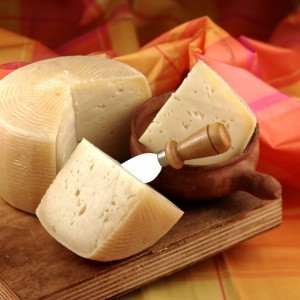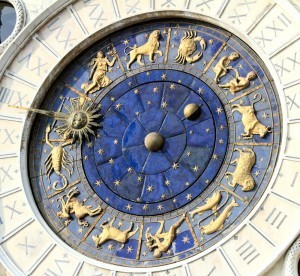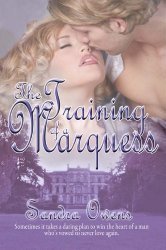Hannah Fielding's Blog, page 105
May 1, 2014
The Sagra of Saint Efisio
 Sardinia is my favourite Italian island, and Cagliari is quite one of the most beautiful parts, which is why I sent my characters Venetia and Paolo there in The Echoes of Love. Paolo explains to Venetia:
Sardinia is my favourite Italian island, and Cagliari is quite one of the most beautiful parts, which is why I sent my characters Venetia and Paolo there in The Echoes of Love. Paolo explains to Venetia:
‘Legend has it that after the seven days of Creation, God decided to give the angels a land where they could live in peace, with the condition that it had to be a place where there were no wars or evil. The angels searched long, until they came down on our earth and discovered the Gulf of Cagliari with its emerald sea, its green vegetation, and the pure white of its cliffs.’
The blue, the green, the white: when I think of Sardinia, what always stands out to me is colour. And so of course I adore the most colourful of the island’s festivals: the Sagra of Saint Efisio, which begins today.
At the heart of the festivities is a four-day procession, leading from Cagliari to the Romanesque church of Saint Efisio on the beach at Nora (see the picture). The streets come alive as float after float passes by, each vibrant with colour.
There are the traccas, carts pulled by oxen and adorned with flowers and local foods, and then Sardinians dressed in the traditional costumes of their area, voices raised in prayer and song. As one writer notes: ‘Among the most eye catching costumes are the orange coloured costumes from Desulo, the austere black dresses worn by the beautiful and very tall girls from Tempio, the traditional gold jewellery on the waistcoats of the costumes from Quartu and the barefooted fishermen from Cabras.’
Following on are Sardinians on horseback, and then the comes the ancient golden coach that carries the statue of Saint Efisio, whose passage is accompanied by the launeddas, Sardinian pipes. Many spectators reach out to touch the carriage as it passes, to connect to the saint, and in the port the boats sound their horns.
Finally, the procession reaches Nora, where there are ceremonies and banquets – until 4th May, when the statue returns to Cagliari by torchlight. It’s laid in the Saint Efisio church to the promise Altrus Annus (Other Years) ready for the next May.
But why all this ceremony for Efisio? Because the Sardinian people feel they owe the saint for saving them.
Saint Efisio has a special connection to the island, for he was born a Christian there, and died one as a martyr for his faith. A Roman soldier, he was sent to Sardinia with orders to put down Christianity there. But instead, an epiphany caused him to turn to God. His emperor was not impressed, but Efisio would not renounce his religion; consequently, he was made an example of and beheaded on Nora beach in the year 303. The Sardinians built churches for Efisio at Cagliari and Nora, and vowed always to honour his courage and sacrifice.
The Sagra of Saint Efisio procession began in 1652, when Cagliari was beset by a deadly plague. Half of the population were wiped out when the authorities made a very public deal with the saint: if he would stop the plague, the people of Cagliari would carry his statue from Cagliari to Nora each year, a journey taking four days. The plague ended, and to this day the Cagliarians honour their promise. Who can fail to admire that steadfast commitment?
Win today with Oh My Books on my ‘Legendary’ Blog Tour & Very Venetian Giveaway
Please visit http://oh-my-books.blogspot.co.uk/2014/05/the-echoes-of-love-legendary-blog-tour.html and comment for your chance to win today, and to read about ‘The Bay of Angels’ legend…
April 30, 2014
Italy: nation of cheese makers
 French president Charles De Gaulle once said, ‘How can you govern a country which has 246 varieties of cheese?’ Well, how about governing Italy then, which lays claim to some 450 different types!
French president Charles De Gaulle once said, ‘How can you govern a country which has 246 varieties of cheese?’ Well, how about governing Italy then, which lays claim to some 450 different types!
Many Italian cheeses date back thousands of years; Pecorino cheese, for example, dates back to the time of Christ. We have the Romans to thank for the firm establishment of Italian cheeses – in particular their invention of the cheese press and their experimentations with ingredients and aging processes and spans. Back then, many homes contained a dedicated ‘cheese kitchen’ or caseale, where the family made and aged cheeses, and in the many monasteries across the country cheese-making was a key task for the monks. Travellers were soon spoilt for choice in sampling varieties, and they took home whichever kinds they had developed a taste for, so spreading the word (English writer Samuel Pepys was supposedly so taken with his Parmigiano Reggiano that during the Great Fire of London in 1666 he buried it in his garden to protect it from the heat!).
Today, Italian cheeses are immensely popular worldwide. Four in ten cheese purchases in the United States, for example, are of mozzarella. No doubt you eat at least one kind of Italian cheese regularly. But are you ‘playing safe’ in the delicatessen, sticking to the much-loved mozzarella and ricotta and mascarpone? Is it time to try a new taste?
Here are some traditional Italian cheeses that I heartily recommend you try:
Caciocavallo: Made in Southern Italy from sheep or cow’s milk Dates back to 500 BC. Don’t be put off by the name (which translates as horse head in Latin!); this is a flavoursome cheese that belongs on any antipasto board alongside cured meats and dry breads.
Fontina: Made in from the Aosta Valley from cow’s milk. Slightly spicy and a little soft. Excellent when melted – the perfect pizza topping.
Gorgonzola: Made in Lombardy from cow’s milk. Comes as soft, mellow and more mature, crumblier. Known for its blue mold veins (originally from being aged in penicillium-rich damp caves!). Ideal with pasta and salad, and try it with pears or figs for a fresh dessert.
Pecorino Toscano: Made in Tuscany from sheep’s milk. A rich, slightly oily cheese that’s a little nutty. Divine with prosciutto or served as a nibble with olives.
Provolone: Italy’s national cheese! Made in Piedmont and Lombardy from cow’s milk. Cave-aged for between three and twelve months. A little sharper than mozzarella; adds bite to any sandwich.
Robiola Piemonte: Made in Piedmont from cow, goat, and/or sheep’s milk. Robiola are really creamy cheeses (cream is often added). Delicious melted into risotto.
Taleggio: Made in Lombardy from cow’s milk. Dates back to the ninth century. Deliciously oozy! Serve with hunks of crusty artisan bread.
Don’t forget the golden rule for cheese: serve at room temperature.
Can’t choose between thee cheeses? Time for a fondue!
Perhaps your local shops don’t offer much in the way of an Italian cheese selection. Don’t let that deter you: these days lots of companies offer online shopping for cheese. Some will send you a monthly box with new cheeses to try alongside your favourites. I wonder what your postman will make of the scent?
And if you’re really dedicated to the pursuit of flavour, add a trip to a ‘cheese restaurant’ to your wish list. Yes, there exist restaurants in which every dish on the menu contains cheese. A cheese lover’s paradise!
Barcelona: Cheese Me
England: L’art du Fromage
France: Le Bistro du Fromager
US: Caseus Fromagerie & Bistro
April 29, 2014
St Mark’s clock, Venice
 Are you a horologist, a lover of timepieces? It seems to me that the world is divided into those who find clocks, from the grandfather down to the miniature, charming and collectable, and those who are something like Captain Hook of JM Barrie’s Peter Pan, haunted by the ‘infernal’ ticking!
Are you a horologist, a lover of timepieces? It seems to me that the world is divided into those who find clocks, from the grandfather down to the miniature, charming and collectable, and those who are something like Captain Hook of JM Barrie’s Peter Pan, haunted by the ‘infernal’ ticking!
I’m in the former camp. I find clocks fascinating and powerful – their appearance, their mechanisms, their chimes and ticks, and their symbolism in marking the passing of time. I begin my novel The Echoes of Love thus:
The clock struck midnight just as Venetia went past the grand eighteenth-century mirror hanging over the mantelpiece in the hall.
Time is fundamental in the novel, and so it is fitting that a clock be the very first image, and the one that brings awareness of the very heart of the book, the echoes of love:
She looked up at the clock. Firelight fell warm on the gold dial. Time had stopped for her. She was amazed at how long she had been standing there reminiscing about her lost life, feeling the echoes of a lost love.
I can trace my appreciation of horology back to childhood, to those antique pieces in my home, but most of all to a family trip taken to Venice, Italy. In fact, it is my first, and most striking, memory of Venice: standing in the heart of the city, in St Mark’s Square gazing up at the Torre dell’ Orologio, the clock tower.
As I write in The Echoes of Love, the clock represents ‘the three pillars of La Serenissima’s power: scientific progress, civic enlightenment and Christian faith; a splendid specimen of Venetian art work and engineering. Its mystical, pagan influences [are] no less beautifully represented in the exquisite representation of the blue and gold zodiac on the clock face.’
But no doubt my childlike wonder at this clock would have been rudely shattered had I known then the legend behind its construction:
The engineers who built the mechanism of the gold and blue chef d’oeuvre had their eyes gouged out so as to prevent them from building a similar piece, and ensure that no other city could have such a magnificent clock as Venice.
It appears this is pure myth, however. History records that the clock was built at the very end of the 15th century by father and son Gian Paolo and Gian Carlo Rainieri. Following the inauguration of the clock, Raineri lived in the clock tower with his family under the pay of the Venetian government to maintain the clock – presumably he would not have been first choice for the post were his eyes missing! Raineri was the first in a line of temperatores (clock keepers), who tended the clock until 1998. What a fabulous job! One to add to my list of romantic occupations for prospective future romantic heroes.
If, like me, you’re something of a horologist then here are some museums you’ll find interesting:
London: Royal Greenwich Observatory; Clockmakers’ Museum; Cuckooland Museum
Switzerland: Musée international d’horlogerie
Germany: Deutsches Uhrenmuseum.
USA: National Watch and Clock Museum, Pennsylvania; American Clock and Watch Museum, Connecticut; Willard House and Clock Museum, Massachusetts
And for quirky, original wristwatches that show off your particular passion in life, take a look at the French Akteo range. I love these watches for writers and book lovers; spectacles for hands!
April 28, 2014
The practice of mindfulness translated into writing
Today’s Western world is all about speed. We eat fast. We work fast. We walk fast. We drive fast. We talk fast. We don’t phone a friend, we text because it’s quicker. We don’t handwrite a letter, we email because it’s quicker. We don’t fetch groceries from the specialist shops in our local high streets, we get everything at the supermarket because – you guessed it – it’s quicker. We all seem to be marching to some pounding rhythm that thrums, Come on, hurry, come on, hurry.
Perhaps the rise of technology is to blame, pulling us into a world of speed and disconnection from the world around. Perhaps it is down to competition – the culture of bigger, better, brighter, which of course means faster. Or perhaps the exhausting galloping through life goes hand in hand with the medical advances of the past century: because we can live longer, we want to so very much, and the ticking of time becomes something to haunt us, to fear – driving us closer to The End.
Whatever the reason, the increase in speed is clear – and it manifests in so many aspects of life, especially in culture. Have you noticed how books are changing?
I grew up reading classic literature. Books that are long, and weighty, and detailed, and descriptive, and in no great hurry to barrel towards the final scene. My degree is in French literature, and if you’ve read any of the French Romantic writers of the nineteenth century, you know that you don’t really get into the story before page 100. Balzac and Stendhal are typical of that, and are my favourites. There is so much depth to the writing, and the time you put into the reading is rewarded: you feel, at the end of the book, that you have achieved something, been changed somehow, really escaped the confines of your daily life.
Compare this way of writing, from the days when life’s pace was slower, with modern fiction. Undoubtedly, there is a trend today to write ‘quick’ stories. Writing ‘experts’ advocate that you cut out all but the most essential detail; that you focus on plot and dialogue and pare down description; that you move along at pace, forcing the reader, heart pounding, to keep turning the pages. Of course, such a style works wonderfully in the thriller genre, and some readers appreciate this pace in other genres too. But were this the only way to write a book today then I fear reading – that wonderful activity for relaxation and escape – would become just another stimulating, fast input for a tired mind.
Are you familiar with the concept of mindfulness? It’s from Buddhist meditation and it involves being attentive to the reality of things, especially the present moment. Mindfulness is an excellent practice for anyone who feels drained by the pace of modern life and disconnected from what really matters: self, loved ones, nature, spirituality. The more often you are mindful, the more often you are calm – and, according to the Buddha, you are further along the path of enlightenment.
You can be mindful in many areas of your life: taking a moment to notice the scent of a rose in a garden, for example, or really appreciating the taste of an apple you’ve bitten into. And I believe that the practice of mindfulness has a place in writing too. I believe that we writers should not be afraid to slow down; to trust that some readers actually appreciate a more classically written work. We can:
Write longer books. ‘Quick to read’ need not be an essential criteria for marketability.
Write stories carefully. And carefully can mean slowly: rather than shoehorning in ten events in the first part of the book, you can explore carefully just three, for example.
Describe our story worlds. Many readers have commented in reviews of my book that they like my writing for its vivid and detailed description that transports them to the setting and time. I think of the plot as the artist’s pencil outline, and the description as the rich, colourful paints the artist uses to fill the gaps.
Explore the depths of our story worlds. The problem with speed is that it does not allow for reflection. But the entire point of a story is to move the reader – and to do this the writer must be prepared to go beneath the surface of the plot and explore the cause and the effect, not just the event.
I like to think we can borrow from the wisdom of Eastern philosopher Lao Tzu, who said: ‘Nature does not hurry, yet everything is accomplished.’ Must the writer hurry, so that the reader may hurry? I hope not.
April 26, 2014
Book review: The Training of a Marquess by Sandra Owens
From the blurb:
Claire Tremaine, the widowed Marchioness of Derebourne, wears leather breeches, trains horses, and helps the damaged ones find their lost spirit. Her husband has just passed away, leaving her with no place to live.
Chastain Warren, the Earl of Kensington, Chase to his friends, isn’t pleased when he learns he’s inherited the title of Marquess of Derebourne. Having recently lost his beloved wife and child, the last thing he wants is to be caretaker of Hillcrest Abbey. Nor does he want to be attracted to Derebourne’s widow, but he is. This woman who wears breeches isn’t anything like the ladies he’s waltzed with in the ballrooms of London.
It doesn’t take Claire long to realize she wants this man, and when he resists, she comes up with a plan she calls The Training of a Marquess and works her horse-whispering magic on Chase.
I thoroughly enjoyed this historical romance novel.
What attracted me most to the book in the first instance was the idea that both the heroine and the hero are not first loves – both were widowed, and Chase, at least, has loved and lost. This struck me as a fresh and brave starting point for a love story, and I was intrigued to see how the author would craft a love story for two people with a good amount of experience in matters of the heart.
Plus, as a horse lover, I couldn’t resist a story from this angle!
The book did not disappoint. From the outset I was drawn into the story, and I found myself looking forward to picking my Kindle up to dive back into it each day. It’s a compelling book for three reasons:
1) An interesting, believable and engaging plot: Just the right balance of action and inner-world exploration. The book moves along at pace, and as I read I felt quite comfortable with the direction of the story.
2) Vivid, likeable characterisation: My favourite characters are Chase’s twin ‘sons’ who made my heart melt – both for them and the man who’d adopted them – and Chase’s mother, who’s just fabulous for her era. I also connected well with the lovers: I very much like the author’s use of narration from both Chase and Claire’s points of view, which allows us to get really close to both main characters.
3) Emotional connection: The author does a great job of creating emotional connection between the reader and the characters. Both the leads have tragic back stories, and I was especially moved by Claire’s. That’s not to say that this is a deep, dark, poignant book – to me, the pervading sense was more like a light romp of a read; indeed, I laughed out loud at some points.
I’d have loved just a little more historical context and setting description. I like to be able to really picture scenes in my mind, and explore the historical period in which a story is set and learn about it.
I think this is a great book for fun escapism – though you need to not take too seriously the idea of training a man as you would a horse!
I reviewed this book for http://www.romantichistoricalreviews.com/ . The Training of a Marquess is available now from Amazon; click on the book cover below to visit the store.
April 25, 2014
The Romance Reviews Sizzling Summer Party
Don’t forget to add this great event to your calendar – this year you can win a $100 gift card and a whole host of goodies and books (my own included)….
April 23, 2014
The 100 best books ever written
 Along with some 200,000 people, I’ve been following with interest Observer associate editor Robert McCrum’s attempt, on the Guardian Books blog, to draw up a list of the 100 best English-language novels ever written. An easy task? Or an impossible one?
Along with some 200,000 people, I’ve been following with interest Observer associate editor Robert McCrum’s attempt, on the Guardian Books blog, to draw up a list of the 100 best English-language novels ever written. An easy task? Or an impossible one?
The editor is encountering hot debate over his choices. He writes:
Each week since we started the project last year, I’ve found that there’s always a steady percentage of my readers who a) viscerally hate it… b) despise it… or c) misunderstand it. …
More interestingly… there are those who debate, in a serious way, the choices I’ve made, challenging my criteria, and offering alternative readings.
I don’t envy him the task! So goes the saying: You can please some of the people all of the time. You can please all of the people some of the time. But you can never please all of the people all of the time.
Quite simply, one reader’s literary delight is another reader’s literary hell. A book that may be placed in pride of place on the bookshelf, to be treasured forever, may find its way in another household into the charity shop donations box. An author – any author – all authors! – reads with joy five-star reviews of their book and with sadness and some bemusement one-star reviews of the same book.
Can we ever, then, form a generally accepted list of the very best fiction ever written? Or does such a list invariably end up instigating battles between book lovers, with cries abounding of ‘literary snob’ and ‘genre-fiction unsophisticate’. Robert McCrum writes: ‘The truth is that if you compile a list like this for a publication like this, you discover a society of book lovers in the middle of a nervous breakdown.’
‘Breakdown’ is a word with negative connotations. Certainly, arguments based on a lack of respect for others’ reading preferences are negative. But in general, what a wonderful state of affairs that people are passionate enough about books to fight for their favourites!
Ultimately, a ‘best books’ list is only ever its writer’s opinion; albeit a well-read and educated one. Who is to say what is better? Who is to say what is best? Reading tastes are entirely individual.
Personally, I would love to see a survey of readers on a massive scale whose results form a ‘100 favourite novels’ list. I suspect that list would differ significantly from a best books list, and that readers would more likely try out a book they haven’t read.
What do you think? I would love to hear your thoughts.
April 22, 2014
The V&A exhibit: ‘Wedding Dresses 1775–2014’
Description. It’s an essential ingredient for any fiction, adding colour and depth and context to a story. In romantic writing, description must be carefully crafted to create a mood. All details matter, from the look of a garden and the food on a plate to the hue of a sunset and the scent on the air. And when it comes to character description, fashion matters!
When I’m writing a novel, some of the descriptions I most enjoy writing are those of characters’ attire – particularly the heroine’s. Take, for example this extract from my novel The Echoes of Love:
Standing in front of her cheval-mirror, Venetia studied herself with critical eyes. She wore a blush silk chiffon bustier-gown that showed off the curve of her shoulders and delicate collarbones. From the cleavage of the snug, draped bodice, the petal-thin material fell in a cascade of romantic folds to the floor. The internal corset, which consisted of an under-wired bra and boned waist, molded her to perfection, ensuring a statuesque silhouette.
And another example, from Burning Embers:
The long dress was an ethereal work of art that suited Coral so much, it looked like it had been created especially for her. Combining dreamy ecru chiffon with matching silk lace inserts, the skirt had an intricate cut and molded to her hips before falling with fluid grace in full folds to the ground. The silk lace motifs embellished with pearls and ton sur ton crystal beads depicted leaves, tendrils, and flowers in full bloom — a design of the utmost feminine allure.
Were Venetia and Coral wearing jeans and t-shirts, the effect would be quite different!
Fashion has such power to create sensuality and beauty and romance, never more so than when it comes to bridal attire. Which is why top of my list to visit on my next trip to London is the ‘Wedding Dresses 1775–2014’ exhibition at the Victoria and Albert Museum. The V&A describes it thus:
This exhibition will trace the development of the fashionable white wedding dress and its treatment by key fashion designers such as Charles Frederick Worth, Norman Hartnell, Charles James, John Galliano, Christian Lacroix, Vivienne Westwood and Vera Wang offering a panorama of fashion over the last two centuries. On display will be the most romantic, glamorous and extravagant wedding dresses from the V&A’s superb collection and will include some important new acquisitions as well as loans including the purple dress worn by Dita Von Teese for her marriage to Marilyn Manson and the outfits worn by Gwen Stefani and Gavin Rossdale on their wedding day. The exhibition will highlight the histories of the dresses, revealing fascinating details about the lives of the wearers and offering an intimate insight into their circumstances and fashion choices.
Here’s a wonderful sneak peak at some of the gowns on display:
Follow Victoria and Albert Museum’s board Wedding Dresses #SavetheDate on Pinterest.
Beautiful! Have you seen the episode of the sitcom Friends in which Monica, Rachel and Phoebe spend the day in wedding dresses and would really quite like to wear them for evermore? These dresses conjure up that feeling for me!
If you’d like to visit the exhibition, which runs from 3 May 2014 to 15 March 2015, you can find details at http://www.vam.ac.uk/content/exhibiti....
April 20, 2014
The Scuole Grandi of Venice
One of the most memorable and impressive aspects of Venice, setting for my novel The Echoes of Love, is its architecture, and of the many beautiful and historic buildings in the city, the Scuole are among my favourite.
The Scuole Grandi translates to ‘great schools’, date back as far as the 13th century and were set up as religious brotherhoods or organisations. In a city run by aristocrats, the Scuole were open to all citizens, and consequently membership spanned all manner of occupations and ethnicities. Each was dedicated to a different patron saint, and its aim was to do charitable works, which included providing money, food, clothes, dowries and funerals for impoverished members, running hospitals and organising religious festivals and processions. They grew to be fertile grounds for the arts, and musicians and composers in particular found patronage at the Scuole.
Eventually, formal buildings – palaces – were built for each school, and in each were commissioned artworks by the great artists of the day. If you visit Venice, taking the décor and construction of at least on Scuole is essential to get a feel for the spiritual and artistic history of the city. There are seven to choose from:
Scuola Grande della Carità (now part of the Gallerie dell’Accademia)
Scuola Grande di San Giovanni Evangelista
Scuola vecchia della Misericordia
Scuola Grande di San Marco
Scuola Grande di San Rocco
Scuola Grande di San Teodoro
Scuola Grande di Carmini
As well as finding the buildings and their contents inspiring from a viewpoint of their beauty, I find the concept of the Scuole fascinating. Why do we not have such schools in each city of the world today – run by the people, for the people; to help the needy, to further the arts?









